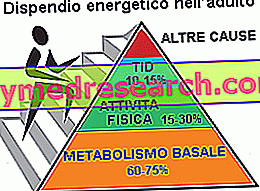
Bone marrow transplantation, also known as hematopoietic stem cell transplantation, is the medical procedure by which a damaged bone marrow is replaced with a healthy bone marrow, in order to restore normal blood cell production.
It is a delicate, complex treatment that is only performed under certain conditions; among these, we note in particular: an optimal patient's state of health (in spite of the illness that afflicts him) and the impracticability (because ineffective) of any other alternative treatment.
Usually performed in cases of aplastic anemia, leukemia, non-Hodgkin's lymphoma and genetic blood diseases, bone marrow transplantation can be autologous or allogeneic . Autologous means that the bone marrow is taken directly from the patient to be treated; allogeneic, on the other hand, means that the bone marrow comes from a compatible donor.
According to a survey by the Worldwide Network for Blood and Marrow Transplantation, dating back to 2006 and reported in the same year, 50, 417 bone marrow transplants were performed worldwide . To be even more precise, of these 50, 417 interventions:
- 28, 901 (about 57%) were autologous, while 21, 516 (about 43%) were allogeneic.
Among the allogeneics, 11, 928 are those that have had, as protagonists, a donor from the same family as the patient, while 9, 588 those who had, for donor, an individual foreign to the patient.
- 24.216 (about 48%) were held in Europe, 17.875 (about 36%) in the Americas, 7.096 (about 14%) in Asia and, finally, 1230 (about 2%) between Asia and the area Eastern Mediterranean .
- 27, 492 (about 54.5%) were performed for a lymphoproliferative disease (various types of lymphoma, multiple myeloma, etc.), 17, 049 (about 33.8%) for a leukemia, 2, 925 (about 5.8%) for a solid tumor, 2, 593 (about 5.1%) for a non-neoplastic blood disease and, finally, 358 (about 1%) for an unspecified blood problem.
In order to carry out this interesting survey, the researchers took into consideration the work carried out by 1, 327 transplant centers, spread in 71 countries around the globe .
COMPARISON WITH THE PAST
In the 33 years from 1973 to 2006, in Europe, the number of bone marrow transplants has increased drastically.
Consider, in fact, that in 1973 the interventions performed were 16 ; in 1983 they were 1, 353 ; in 1993 they were 7, 737 ; in 1999 there were 17, 800 (of which 12, 067 autologous and 5, 733 allogeneic); finally in 2006 - as has already been said - there were a good 24, 216 .


